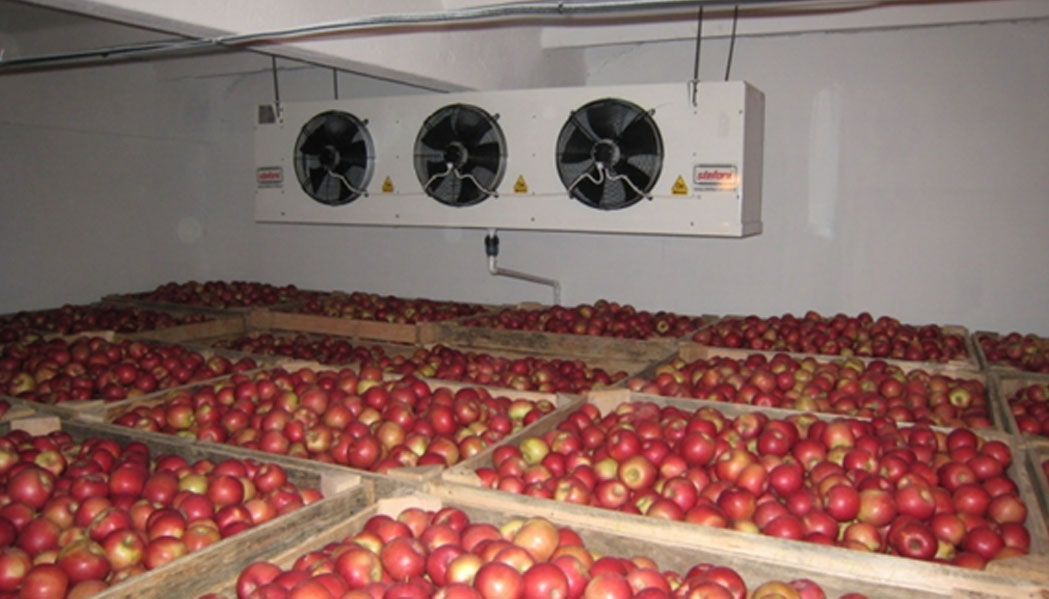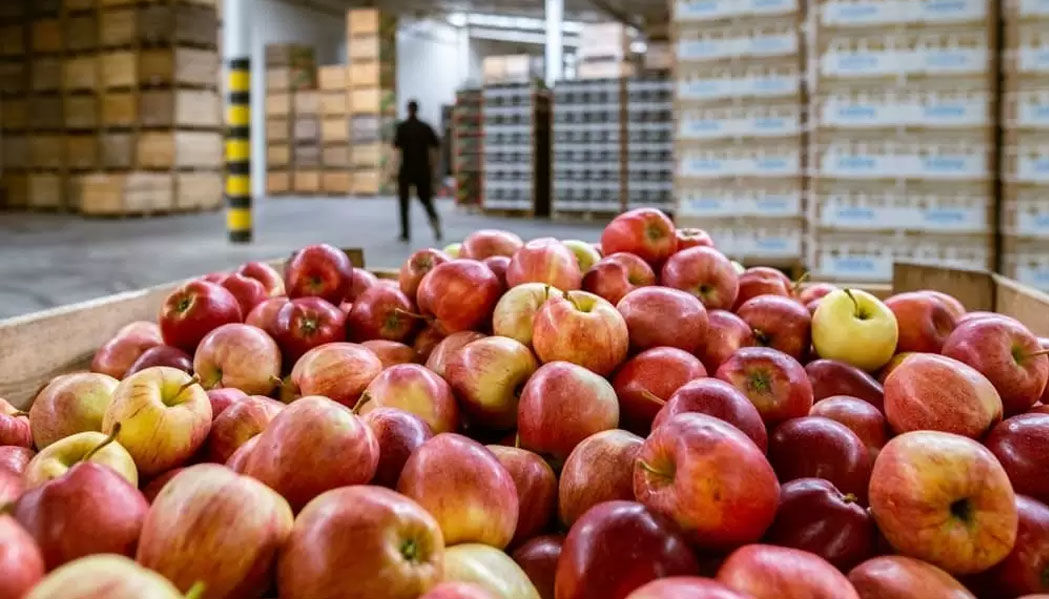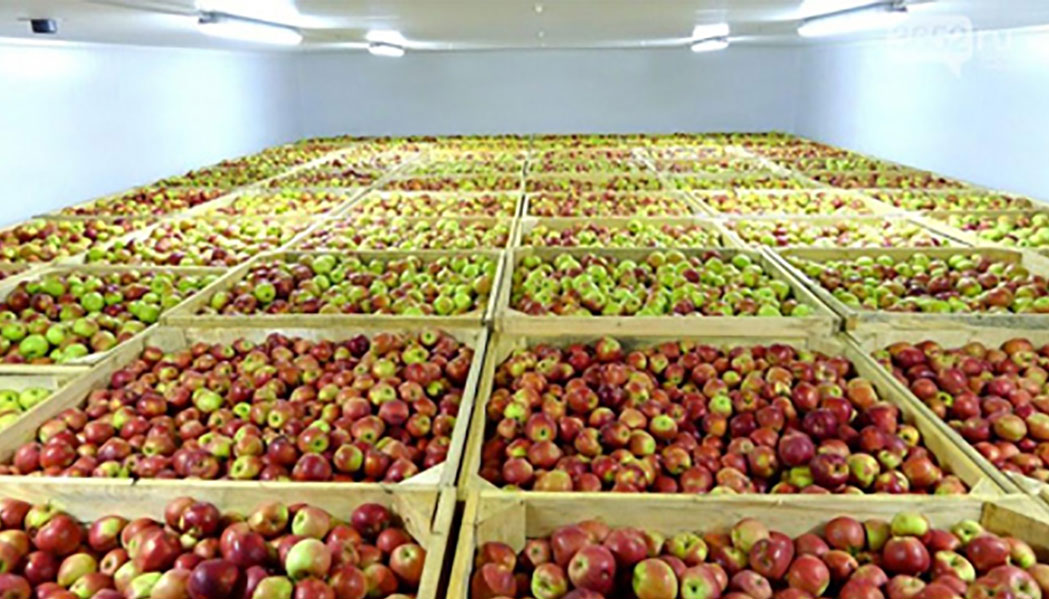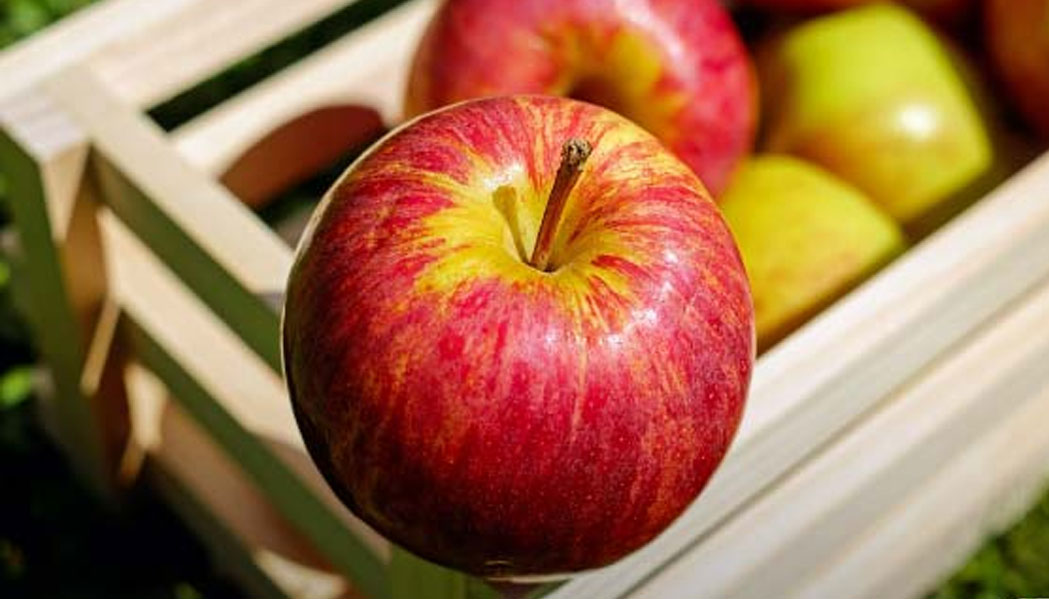Storage Conditions and Key Points Regarding Apple Cold Storage
Proper storage conditions are essential for preserving the quality and extending the shelf life of apples and other agricultural products. Cold storage facilities play a vital role in ensuring the quality of apples from the orchard to the market. In this article, we will examine the detailed conditions for storing apples in cold storage and the impact on preserving the quality of the product.
Ideal Storage Conditions for Apples in Cold Storage
Temperature:
The ideal temperature range for proper storage is 0 to 4 degrees Celsius. The importance of this range can be examined from various scientific perspectives, including agricultural engineering, biological engineering, microorganisms, and chemical engineering:
Agricultural Engineering:
From an agricultural engineering perspective, maintaining the temperature of apples in cold storage between 0 to 4 degrees Celsius is important for various reasons. Cold storage of apples provides multiple benefits in terms of maintaining quality, taste, flavor, and health throughout the storage period, leading to increased shelf life and reduced waste. Storage at temperatures below 0 degrees Celsius can result in chilling injury and skin cracking of apples. Chilling injury leads to browning of the skin, changes in taste, and loss of product texture. Conversely, storage at temperatures above 4 degrees Celsius can lead to loss of sweetness, faster spoilage, softening, color changes, and premature sprouting of apples.
Biological Engineering and Microorganisms:
The growth of microbes and fungi that cause diseases and spoilage of apples significantly decreases at low temperatures. Microbes and fungi are living organisms that can cause diseases and spoilage of apples. Cold temperatures inhibit the growth and reproduction of microorganisms and prevent apple contamination. Some beneficial microbes that are more active at cold temperatures can help maintain apple health.
Chemical Engineering:
Cold temperatures reduce cellular respiration rates and slow down metabolism, which means a decrease in sugar consumption, one of the most important factors in apple spoilage. Maintaining a balance between acidity and sugar is crucial for apple taste and flavor. Cold temperatures preserve this balance and prevent changes in the taste and flavor of the product. Additionally, apples contain aromatic compounds that create their taste and smell. Cold temperatures preserve these aromatic compounds and prevent a decline in apple taste and smell quality.
Humidity:
The ideal relative humidity for storing apples in cold storage is between 90 to 95 percent. Proper humidity helps maintain the natural moisture of apples and prevents them from drying out, wrinkling, and losing freshness.
Microbiology:
Apples naturally host a wide range of microorganisms, including bacteria, fungi, and yeasts. These microorganisms can be found on the surface, inside the apple, or in the surrounding soil and water.
Bacteria:
Low temperatures significantly reduce the growth rate of harmful bacteria. Bacteria are single-celled living organisms that can cause diseases and spoilage of apples. Cold temperatures inhibit the growth and reproduction of bacteria and prevent apple contamination.
Fungi:
Fungi require various enzymes for their growth and reproduction. Cold temperatures reduce the activity of these enzymes and prevent the growth and reproduction of fungi.
Yeasts:
Yeasts require various enzymes for sugar fermentation. Cold temperatures reduce the activity of these enzymes and prevent sugar fermentation by yeasts. Also, alcohol production by yeasts decreases at low temperatures, preventing changes in the taste and flavor of apples.
Food Engineering and Packaging:
Food packaging engineers select the appropriate type of packaging for apples in cold storage based on the type of apple, storage duration, and storage conditions. Packaging designs take into account factors such as ventilation, resistance, permeability, and printability to design suitable packaging for apples in cold storage. Consider the following points in this section:
Selection of Packaging Type: Apples can be stored in various types of packaging, including cardboard boxes, wooden crates, and plastic baskets. The appropriate type of packaging depends on various factors such as apple volume, storage duration, and transportation conditions.
Packaging Characteristics: Apple packaging should have characteristics such as resistance to impact and pressure, impermeability to moisture and gas (ethylene).
Packaging Capacity: Apple packaging should not be overly filled, as overfilling can hinder airflow.
Ventilation and Ethylene Control or Monitoring:
Proper ventilation to remove ethylene from the cold storage is essential. Ethylene is a plant hormone that plays a vital role in fruit ripening. Apples, like some fruits, release ethylene during ripening. Controlling or monitoring ethylene in cold storage is essential for maintaining the quality and longevity of apples. Proper ventilation is a crucial factor in maintaining the quality, taste, flavor, and health of apples during the storage period in cold storage.
Solutions for Proper Ventilation in Apple Cold Storage
Using air circulation and humidity control systems in cold storage provides suitable conditions for apple storage.
Placement of Ventilation Vents in Cold Storage:
The placement of vents in apple cold storage plays a crucial role in air circulation and temperature control or monitoring inside the cold storage. The number and size of vents are important for proper air circulation and compatibility with the air volume.
Proper Arrangement of Packaging in Cold Storage:
Apple rows and columns should be arranged in cold storage to allow sufficient space for air circulation. Avoid blocking air channels with pallets or other objects.
Ethylene Control or Monitoring
Proper ventilation to remove ethylene from the cold storage is essential. Devices such as ethylene absorbers are available in various types, including chemical, catalytic, and membrane-based absorbents. Place ethylene absorbers in the appropriate location in the cold storage for maximum efficiency. Choose apples that produce less ethylene. Proper ventilation and ethylene control or monitoring are two vital components in the design of cold storage used for apple storage. These techniques help maintain desirable environmental conditions and ensure that the product remains in the best condition until reaching the market. Precise temperature, humidity, and ethylene level monitoring can make the difference between a high-quality product and an imperfect one.
Design and Technology of Modern Apple Cold Storage:
In addition to traditional apple storage methods in cold storage, which include temperature, humidity, and proper ventilation, various modern methods and technologies are used to maintain apple quality and longevity. Examples of modern methods and technologies used in apple cold storage include controlled atmosphere storage, dynamic controlled atmosphere storage, hypobaric storage, and modified atmosphere packaging.
Controlled Atmosphere Storage:
Controlled atmosphere storage is a method used to extend the shelf life of apples by controlling the concentrations of oxygen, carbon dioxide, and nitrogen in the storage environment. This method slows down the respiration rate of apples and inhibits the growth of microorganisms, thereby reducing the rate of spoilage.
Dynamic Controlled Atmosphere Storage:
Dynamic controlled atmosphere storage is an advanced version of controlled atmosphere storage that continuously monitors and adjusts the concentrations of oxygen, carbon dioxide, and nitrogen in the storage environment based on real-time measurements of apple respiration rates and environmental conditions.
Hypobaric Storage:
Hypobaric storage is a method used to extend the shelf life of apples by reducing the atmospheric pressure in the storage environment. This method slows down the respiration rate of apples and inhibits the growth of microorganisms, thereby reducing the rate of spoilage.
Modified Atmosphere Packaging:
Modified atmosphere packaging is a method used to extend the shelf life of apples by modifying the composition of the atmosphere inside the packaging. This method slows down the respiration rate of apples and inhibits the growth of microorganisms, thereby reducing the rate of spoilage.
Conclusion
Proper storage conditions are essential for preserving the quality and extending the shelf life of apples from the orchard to the market. Cold storage facilities play a vital role in ensuring the quality of apples by controlling temperature, humidity, and ethylene levels. Additionally, modern methods and technologies such as controlled atmosphere storage, dynamic controlled atmosphere storage, hypobaric storage, and modified atmosphere packaging further enhance the quality and longevity of apples. By understanding and implementing proper storage conditions and utilizing modern methods and technologies, producers can ensure that consumers receive high-quality apples that are fresh, flavorful, and nutritious.





